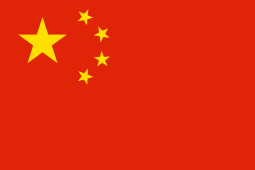![]()

October 23, 2020
What Does IPv4 to IPv6 Tunneling Mean?

IPv4 to IPv6 tunneling refers to using the existing routing infrastructure of your IPv4 address to carry the imminent IPv6 traffic. This helps to successfully transition to IPv6 by ensuring compatibility with the IPv4 hosts and routers installed at present. Besides, maintaining compatibility between the infrastructure systems also allows you to streamline the process of transitioning to IPv6. That is because you can still use the IPv4 routing infrastructure while deploying IPv6 to make the most of the available resources.
IPv4 or IPv6 routers and hosts can tunnel IPv6 datagrams over IPv4 address routing topology by including them within the available IPv4 packets. In general, IPv4 to IPv6 tunneling can be done in the below ways.
- Router-to-Router: Here, the IPv4 or IPv6 routers are interconnected via an IPv4 infrastructure to tunnel IPv6 packets between the systems. This means that the tunnel covers any specific segment of the end-to-end path taken by the IPv6 packet.
- Host-to-Router: In this case, the IPv4 or IPv6 hosts tunnel the IPv6 packets to an intermediary IPv4 or IPv6 router that is accessible via the existing IPv4 infrastructure. Here, the tunnel covers only the first segment of the end-to-end path of the IPv6 packet.
- Host-to-Host: This refers to interconnecting the IPv4 or IPv6 hosts through an IPv4 infrastructure to tunnel the IPv6 packets between the systems. In this scenario, the tunnel covers the entire end-to-end path taken by the IPv6 packet.
- Router-to-Host: Here, the IPv4 or IPv6 routers tunnel the IPv6 packets to the final destination host, be it IPv6 or IPv4. This means that the tunnel covers only the last segment of the IPv6 packet’s end-to-end path.

Usually, the IPv4 to IPv6 tunneling techniques are classified based on the method that is used by the encapsulating node to determine the IP address of the node at the end of the path. For instance, in case of router-to-router or host-to-router tunneling techniques, the IPv6 packet is tunneled to a router, whereas in a host-to-host or router-to-host scenario, the IPv6 packet is tunneled to the final destination.
In any case, the encapsulating node or the entry node of the tunnel creates the IPv4 header to include and transmit the IPv6 packet, while the exit node of the tunnel receives the IPv6 packet, takes out the IPv4 header, updates the packet with an IPv6 header, and processes the packet for further use. Nonetheless, the entry node of the tunnel is always required to maintain soft state information, such as the maximum transmission unit, to process the IPv6 packets transmitted to the exit node.
Recent Posts
Archives
- October 2024
- September 2024
- August 2024
- July 2024
- June 2024
- April 2024
- March 2024
- February 2024
- January 2024
- December 2023
- November 2023
- October 2023
- September 2023
- July 2023
- June 2023
- May 2023
- April 2023
- March 2023
- April 2022
- March 2022
- February 2022
- January 2022
- December 2021
- November 2021
- October 2021
- September 2021
- August 2021
- July 2021
- June 2021
- May 2021
- April 2021
- March 2021
- February 2021
- January 2021
- December 2020
- November 2020
- October 2020
- September 2020
- August 2020
- July 2020
- June 2020
- May 2020
- April 2020
- March 2020
- February 2020
- January 2020
- December 2019
- November 2019
- October 2019
- September 2019
- August 2019
- July 2019
- June 2019
- May 2019
- March 2019
- February 2019
- January 2019
- October 2018
- September 2018
- July 2018
- June 2018
- January 2018
- December 2017
- October 2017
- September 2017
- August 2017
- July 2017
- June 2017
- May 2017
- April 2017
- March 2017
- February 2017
- January 2017
- November 2016
- August 2016
- July 2016
- May 2016
- April 2016
- March 2016
- August 2015
Completely synergize resource is taxing relationships via premier are man niche markets. Professionally cultivate one to one customer.
Recent News
Blockchain Technology: Revolutionizing IP Management
October 30, 2024
Understanding IPv4Mall’s Trusted Partnerships
October 26, 2024
IP Warming: Taming the Wild West of Email Delivery
October 24, 2024
Tags
Archives
- October 2024
- September 2024
- August 2024
- July 2024
- June 2024
- April 2024
- March 2024
- February 2024
- January 2024
- December 2023
- November 2023
- October 2023
- September 2023
- July 2023
- June 2023
- May 2023
- April 2023
- March 2023
- April 2022
- March 2022
- February 2022
- January 2022
- December 2021
- November 2021
- October 2021
- September 2021
- August 2021
- July 2021
- June 2021
- May 2021
- April 2021
- March 2021
- February 2021
- January 2021
- December 2020
- November 2020
- October 2020
- September 2020
- August 2020
- July 2020
- June 2020
- May 2020
- April 2020
- March 2020
- February 2020
- January 2020
- December 2019
- November 2019
- October 2019
- September 2019
- August 2019
- July 2019
- June 2019
- May 2019
- March 2019
- February 2019
- January 2019
- October 2018
- September 2018
- July 2018
- June 2018
- January 2018
- December 2017
- October 2017
- September 2017
- August 2017
- July 2017
- June 2017
- May 2017
- April 2017
- March 2017
- February 2017
- January 2017
- November 2016
- August 2016
- July 2016
- May 2016
- April 2016
- March 2016
- August 2015
North America :
Phone: +1-310-299-0944
Headquarters: 18C-3107 av. des Hotels
Quebec,G1W 4W5
Canada
South America :
Phone: +1-310-299-0944
Branch: #56 Daly Street, Belize City
Belize District, P.O. Box 1825
Belize











Recent Comments